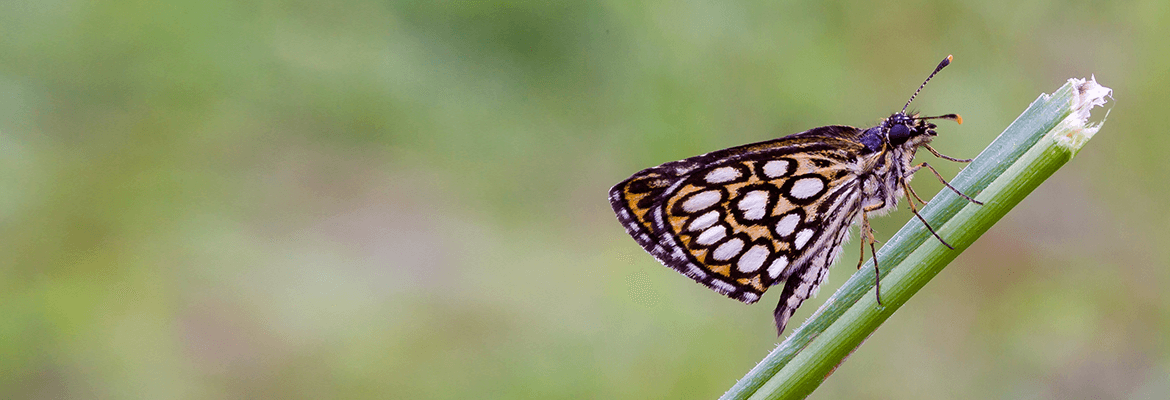
he-tuh-ROP-tuh-russ MOR-fee-uss
Wingspan
15 - 17 mm
Checklist Number
57.003
he-tuh-ROP-tuh-russ MOR-fee-uss
Wingspan
15 - 17 mm
Checklist Number
57.003
This butterfly was discovered in Jersey in 1946 at 3 separate sites, but subsequently became restricted to a single, small site in the north of the island. It is believed that larvae were accidentally introduced in hay that was imported from France during the Second World War while under German occupation (1940-1945). There was a petrol shortage on the island, and this led to an increased use of horses. The butterfly had been extinct on the island since 1996, but was then rediscovered in the north of the island in 2020. In Jersey, the butterfly was known by its French name of Le Miroir ("the mirror"), referring to the appearance of the white spots on the hindwings, which resemble beads of water on glass. The butterfly forms discrete colonies and, where it does exist, can occur in large numbers.
| Family: | Hesperiidae | Latreille, 1809 |
| Subfamily: | Heteropterinae | Aurivillius, 1925 |
| Tribe: | ||
| Genus: | Heteropterus | Duméril, 1806 |
| Subgenus: | ||
| Species: | morpheus | (Pallas, 1771) |
Description to be completed.
This species is a rare migrant to Britain and/or Ireland.
| 1.2 Rare Migrant |
Where this butterfly occurred in Jersey, it was found in a small habitat of sheltered damp grassland dominated by Purple Moor-grass, situated on the edge of a bog. In Europe, the habitat is described as shady roads and woodland clearings, each with damp soils.
No conservation action is relevant for this species.
This butterfly is single brooded throughout its range. On Jersey, it was recorded from mid-July to mid-August.

This butterfly has a distinctive flight, which consists of a series of "hops" or "bounces" low over the ground, making it possible to identify the species from a distance. When egg-laying, the female lands on a blade of grass, backs down the leaf and then deposits a single egg low down in the centre of the blade.
Description to be completed.
The newly-emerged larva spins the edges of a leaf together to form a tube in which it lives. The larva feeds until it is half-grown, in early October, before entering hibernation within the tube. The larva emerges from hibernation the following spring and resumes feeding. Once a leaf blade is eaten, the larva moves to a new location, forming a new shelter.
The primary larval foodplant is Purple Moor-grass (Molinia caerulea).
Description to be completed.
Description to be completed.
Description to be completed.
Description to be completed.
Description to be completed.
The following links provide additional information on this butterfly.